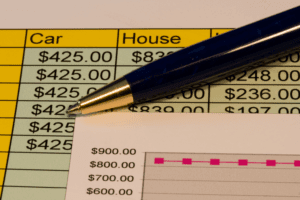
The value of capital assets and property, including patents, structures, machinery, and notes receivable, are considered long-term assets. It’s significant to note that certain assets, such as fixed assets, do not have their recorded values increased to reflect rises in market value. The par value of issued stock is an arbitrary value assigned to shares in order to fulfill state law.
- Therefore, the stockholder’s equity of PRQ Ltd as on March 31, 20XX stood at $140,000.
- By understanding its components and applications, businesses and investors alike can make smarter decisions.
- Below is a break down of subject weightings in the FMVA® financial analyst program.
- Preferred stock that can be exchanged by the holder for a specified number of shares of common stock of the same company.
Treasury Stock
For example, assume that a corporation has 100,000 shares of $0.50 par value common stock before a 2-for-1 stock split. At the time of the split a memo entry would be entered in the records stating that after the 2-for-1 stock split, the corporation has 200,000 shares of $0.25 par value common stock outstanding. Every corporation has common stock and those owners are known as common stockholders.
Components of Shareholders Equity
This situation, known as negative equity, may signal financial distress or insolvency, indicating that the company might struggle to meet its obligations without additional financing or restructuring. The amount of other comprehensive income is added/subtracted from the balance in the stockholders’ equity account Accumulated Other Comprehensive Income. Since the balance sheet amounts reflect the cost and matching principles, a corporation’s book value is not the same amount as its market value. For example, the most successful brand names and logos of a consumer products company may have been developed in-house. Since they were not purchased, their high market values are not included in the corporation’s assets.
Components of shareholders’ equity
The shareholders’ interest in the company’s equity is maintained by all such payouts. A shareholders’ equity refers to the portion of accounting a company’s net worth that the shareholders are entitled to receive when it liquidates. It is calculated by subtracting total liabilities from the firms’ total assets.

- When dividends are declared, retained earnings decrease, leading to a reduction in total stockholders’ equity, reflecting the outflow of resources to shareholders.
- Stockholders Equity provides highly useful information when analyzing financial statements.
- For example, assume that a corporation has 100,000 shares of $0.50 par value common stock before a 2-for-1 stock split.
- Stockholders’ equity can be calculated by subtracting the total liabilities of a business from total assets or as the sum of share capital and retained earnings minus treasury shares.
- Companies are under no duty to distribute dividends unless the board has legally declared them.
- With negative shareholder equity, the stockholders will have no residual value as there will not be enough money to pay the company’s creditors and debtholders.
It is the amount left with or kept aside by the company after it pays the dividend from net income. Normally, the investors and firms decide to reuse this amount and reinvest the same in the company. So, for example, if A has a 20 percent contribution and B has a 40 percent contribution, the latter’s share would be more than the former when the company liquidates or makes significant profits. Long-term assets are the value of the capital assets and property such as patents, buildings, equipment and notes receivable.
Other Comprehensive Income

For investors, stockholders’ equity is a window into a company’s financial position. Investors also use equity to compare companies within the same industry, identifying which ones offer the best value. When a company buys back shares, it uses cash to repurchase them, which reduces both cash (an asset) and stockholders’ equity. For example, if a company repurchases $10,000 worth of shares, its equity decreases by that amount. This account is then closed to the owner’s capital account or a corporation’s retained earnings account.

- All of the characteristics of each preferred stock issue are contained in a document called an indenture.
- Actual equity value or equity book value is both examples of total equity.
- To calculate retained earnings, the beginning retained earnings balance is added to the net income or loss and then dividend payouts are subtracted.
- For businesses and investors alike, stockholders’ equity is one of the key answers.
- However, if a state law requires a par (or stated) value, the accountant is required to record the par (or stated) value of the common stock in the account Common Stock.
- We refer to a company’s equity (business net worth or company book value) as the shareholders equity.
- Preferred stock where past, omitted dividends do not have to be paid before a dividend can be paid to common stockholders.
Finally, the number of shares outstanding refers to shares that are owned only by outside investors, while shares owned by the issuing corporation are called treasury shares. Stockholders Equity provides highly useful information when analyzing financial statements. In events of liquidation, equity holders are last in line behind debt holders to receive any payments. The easiest approach is to look for the stockholders’ equity subtotal in the bottom half of a company’s balance sheet; this document already aggregates the required information. Let us take the annual report of Apple Inc. for the period ended on September 29, 2018. As per the publicly released financial data, the following information is available.

Total equity less preferred equity divided by the number of outstanding shares is the BVPS formula. Equity is the portion of a company’s value that can be attributed to its owners. The remaining claims of a corporation’s owners against the company after its debts have been settled are referred to as shareholders equity. In order to assess total solvency, loan holders are stockholders equity equation therefore not overly concerned with the value of equity beyond the basic level of equity. But because stockholders’ equity may only be paid out after bondholders’ equity has been paid out, shareholders are worried about both liabilities and equity accounts. As a result, if the shareholder equity value is positive, equity shareholders know they can expect to receive residual asset value in the company.
The second equation for shareholders’ equity is sometimes known as the investors’ formula because it is used specifically by current or potential investors to https://lovenailsetterbeek.com/how-to-abbreviate-million-a-complete-guide-to/ assess the financial health of the company. Stockholders’ equity comprises several components, including share capital, retained earnings, treasury stock, and other comprehensive income. It provides a snapshot of a company’s financial health and stability, crucial for investors, creditors, and the company’s management.
